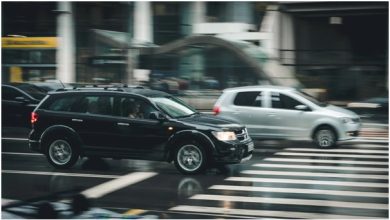How To Set The Correct Tire Pressure
Driving with the recommended tire pressure is vital to improve safety, reduce consumption and extend tire life. If you know how to set the correct tire pressure, it’s a quick and easy maintenance task.
Knowing the correct tire pressure and maintaining it is essential to ensure proper functioning of our vehicle. In addition to avoiding breakdowns that can be of great importance, driving with the correct pressure will help us avoid traffic accidents.
For this reason, it is necessary that at least once a month, check that it is in perfect condition in order to continue using your vehicle.
But what is the correct pressure? For this question, the answer is: “it depends”, since each type of vehicle must circulate with its own pressure and appropriate to its characteristics. If you want to know the one of your car you can find it in the manual of the same.
In this section, the pressures for each condition will be indicated, that is to say: if the car travels with two occupants, with all its seats occupied, if it is carrying weight, trailer… etc. By looking at this table you will be able to check what pressure you need at all times. Check it and adjust the pressure when necessary.
Here you go for the best review on Milestar Patagonia Mud Tire.
How to measure tire pressure step by step
Measuring tire pressure is a very simple process that should be done at least once a month. You must bear in mind that the most common thing is for the tires to lose pressure and this can be about 0.069 bar per month, in general.
To measure the tire pressure you will need a manometer. You can find it at all service stations and using it is very simple.
- The tire must be cold, that is, the measurement must be carried out when a long journey has not yet been undertaken.
- Unscrew the valve cap from your tire and place the pressure gauge on it. The machine will show you a result.
- Compare the pressure gauge value with that recommended for your vehicle. This must match and if it is higher or lower it must be adjusted to get the right pressure to circulate.
- Check all the wheels. It also doesn’t hurt to check the pressure of the spare tire.
- If necessary, use a compressor to give them more air. In the event that you verify that after performing this operation the pressure continues to drop or is not maintained.
What damage can cause driving with inadequate pressure?
Driving with inadequate pressure sometimes causes many breakdowns and damage to our vehicle that are easily avoidable. Here’s what can happen if you drive with a lower or higher pressure than is ideal for your car.
Circulate with a higher pressure than recommended
The tire wears more in the center: the friction surface decreases and with this we will get it to wear more in the central part, making it last less and deteriorate irregularly.
Reduction of grip: as there is less surface in contact with the ground, adhesion will be affected, causing more unsafe driving.
Circulate with a lower pressure than recommended
Aquaplaning: driving with low pressure wheels on wet pavement favors loss of grip which can cause aquaplaning as the water cannot be evacuated properly.
Increased braking distance: when we drive with low pressure tires, the time we will need to brake and the distance increase considerably.
Tire wear: As the area of friction increases, so do the chances of deforming the tires or facing a wheel blowout.
Greater fuel consumption: rolling resistance increases and therefore, so will fuel consumption, something that can be up to 6 percent more than if we circulate with the right pressure.
As you can see, checking tire pressure is essential if we want to drive safely. With correct maintenance and following the recommendations of the manufacturer of our vehicle, we will ensure that it remains in optimal conditions for longer.
It is a simple task that will avoid costly breakdowns, dangerous accidents or completely unnecessary consumption of fuel or wheels. And you, how long has it been since you checked the pressure of your tires?


